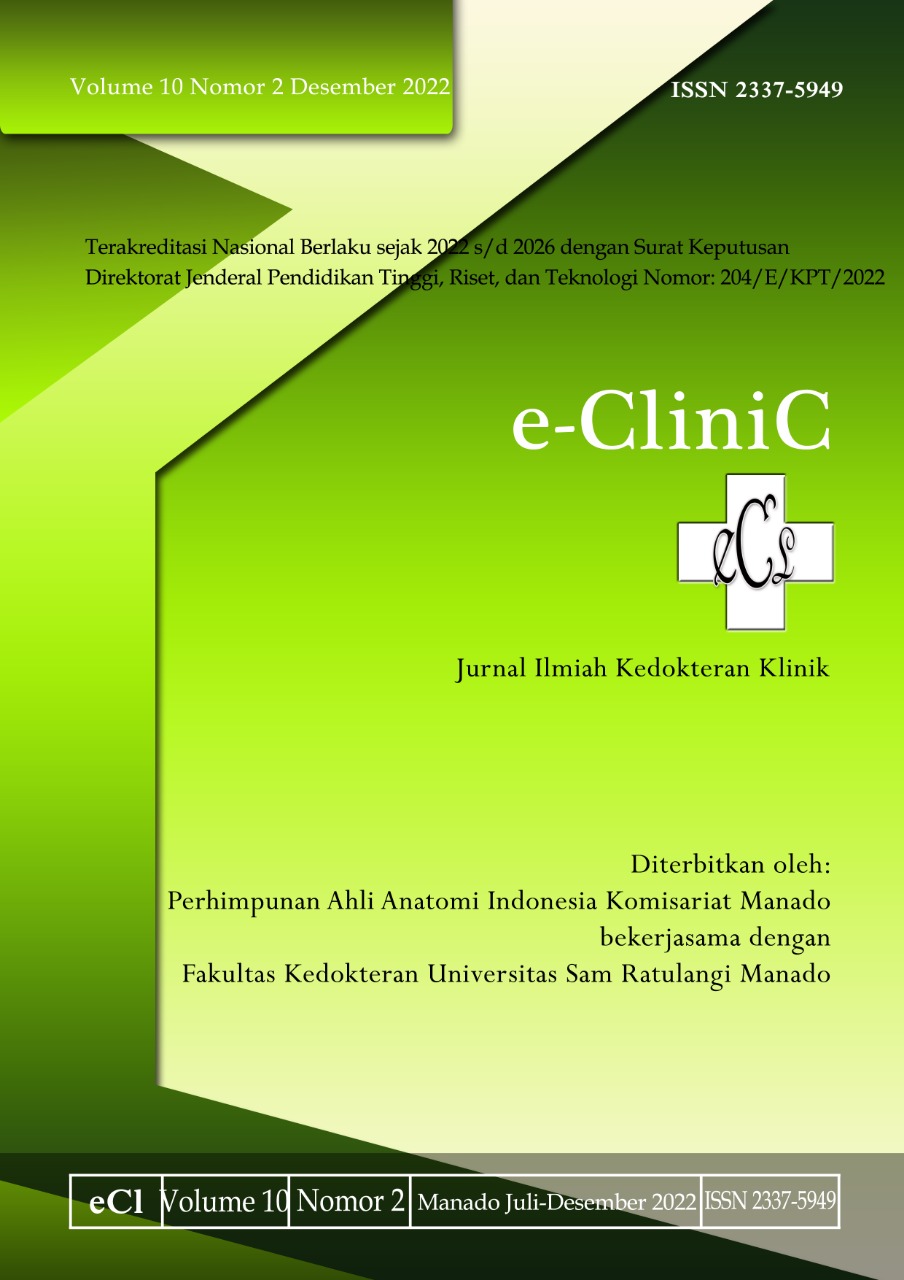Role of Troponin Test in Diagnosis and Management of Acute Myocardial Infarction
DOI:
https://doi.org/10.35790/ecl.v10i2.38288Abstract
Abstract: To date, AMI is still an important global health problem because of relatively high morbidity and mortality rates. Diagnosis of AMI can be established if there are at least two of the three criteria to be met, namely chest pain (anamnesis), persistent changes in electrocardiographic (ECG), as well as cardiac biomarker creatine myocardial band (CK-MB), cardiac troponin T (cTnT), or cardiac troponin I (cTnI). Treatment for AMI patients consists of reperfusion therapy and pharmacological therapy. This study aimed to determine the role of troponin examination in the diagnosis and management of AMI. This was a literature review study with a total of 13 literature reviews. The results showed that diagnosis of AMI could be established by conducting a cardiac biomarker examination, the troponin. Troponin was almost specific and highly sensitive to detect the presence of AMI. Moreover, minor damage of myocardium could be demonstrated by checking troponin level. In addition, changes in troponin levels could also be used as predictors of side effects that could occur after treatment or even an increase in late mortality. However, increased troponin level sould also occur in other conditions, such as chronic kidney disease, pulmonary embolism, and sepsis. Therefore, the execution of its interpretation should fit the context of the clinical situation in the patient. In conclusion, troponin plays an important role in the diagnosis and management of AMI.
Keywords: troponin; diagnosis and management; acute myocardial infarction
Â
Abstrak: Hingga saat ini IMA masih menjadi suatu masalah kesehatan penting dunia dikarenakan angka morbiditas dan mortalitas yang relatif tinggi. Diagnosis IMA dapat ditegakkan jika terdapat minimal dua dari tiga kriteria yang harus dipenuhi, yaitu nyeri dada (anamnesis), gambaran elektrokardiografi (EKG) yang berubah secara persisten, serta pelepasan biomarker jantung yaitu Creatine Kinase Myocardial Band (CK-MB), Cardiac Specific Troponin T (cTnT), atau Cardiac Specific Troponin I (cTnI). Penanganan IMA berupa terapi reperfusi dan terapi farmakologik. Penelitian ini bertujuan untuk mengetahui peran pemeriksaan troponin pada diagnosis dan penanganan IMA. Jenis penelitian ialah suatu literature review, dengan jumlah literatur yang diteliti sebanyak 13 literatur. Hasil penelitian mendapatkan bahwa diagnosis IMA dapat ditegakkan salah satunya dengan melakukan pemeriksaan biomarker jantung, dalam hal ini kadar troponin. Troponin sendiri berperan penting dalam diagnosis IMA dikarenakan hampir spesifik dan sangat sensitif dalam mendeteksi adanya IMA. Kerusakan kecil pada miokard dapat ditunjukkan melalui pemeriksaan kadar troponin. Perubahan kadar troponin juga dapat digunakan sebagai prediktor efek samping yang dapat terjadi setelah penanganan atau bahkan peningkatan mortalitas lanjut. Peningkatan kadar troponin tidak hanya terjadi pada IMA, tetapi juga dapat terjadi pada kondisi lain sehingga dalam pelaksanaan interpretasi nilainya harus sesuai dengan konteks situasi klinis yang terjadi pada pasien. Simpulan penelitian ini ialah pemeriksaan troponin berperan penting dalam diagnosis dan penatalaksanaan IMA.
Kata kunci: troponin; diagnosis dan penanganan; infark miokard akut
Downloads
Additional Files
Published
How to Cite
Issue
Section
License
COPYRIGHT
Authors who publish with this journal agree to the following terms:
Authors hold their copyright and grant this journal the privilege of first publication, with the work simultaneously licensed under a Creative Commons Attribution License that permits others to impart the work with an acknowledgment of the work's origin and initial publication by this journal.
Authors can enter into separate or additional contractual arrangements for the non-exclusive distribution of the journal's published version of the work (for example, post it to an institutional repository or publish it in a book), with an acknowledgment of its underlying publication in this journal.
Authors are permitted and encouraged to post their work online (for example, in institutional repositories or on their website) as it can lead to productive exchanges, as well as earlier and greater citation of the published work (See The Effect of Open Access).







